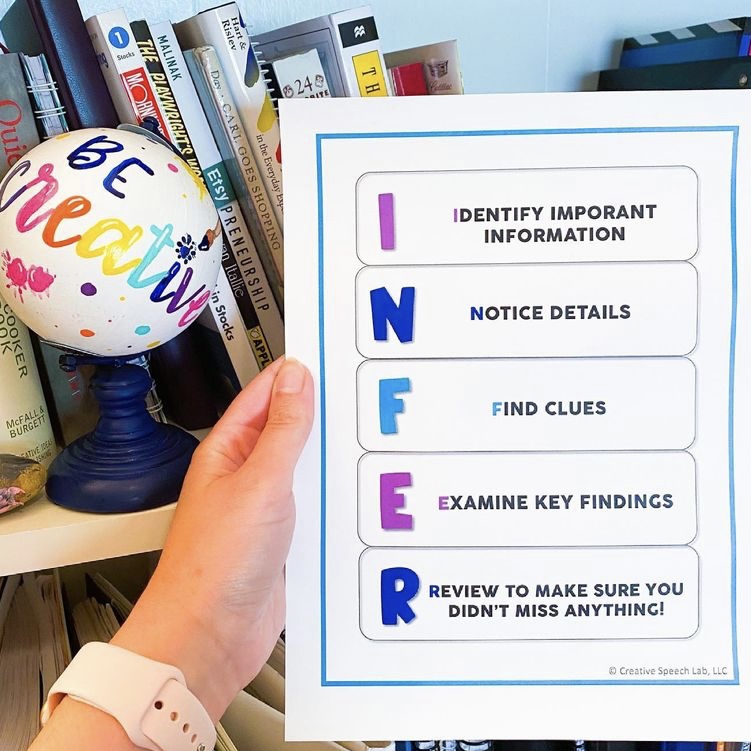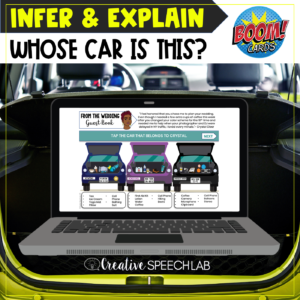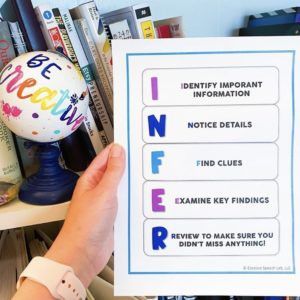Ever find it difficult to provide your students with a good inferencing lesson?
Personally, I’ve found that most of the materials in my therapy room are not challenging enough for my students, so I’ve devised a few fun and easy lessons of my own for various skills levels to target this tricky and important skill.
(Be sure to scroll to the bottom to grab a special inferencing freebie!)
- Mail:
Instead of tossing that catalogue or (somewhat annoying) offer, save your interesting mail. Students will love sorting through your pile as you ask them questions like:
- What do you think is inside?
- Why did they send me this?
- What are they trying to sell?
- Why did they use this wording?
- Why did they choose that picture?
2. Engaging Scenarios
Inferencing becomes much more meaningful and engaging in the context of a relatable narrative!
I also created some Infer and Explain Travel Trouble scenarios which make inferencing practice especially motivating.
Sometimes older students enjoy engaging in these kinds of scenarios via technology, which is why I created several Boom Card™ sets as well!
3. Commercials:
Similarly, commercials also offer powerful tools for inferencing. Professional marketing companies make very calculated decisions related to the commercial’s casting, setting, colors, music and storyline.
Ask your students about why these choices were made in the commercial. Commercials with storylines can also allow you to pose inferential questions about the characters’ feelings and behavior.
If you find a commercial with humor, this can potentially provide some higher level inferencing practice to determine why it is funny. Commercials are all too easy to find on the Internet!
4. Photo albums:
Talk about a fun speech therapy lesson!
Grab an old photo album or sort your digital photos into a special therapy album on a device. Ask your students about:
- how the people in the photos are feeling and why,
- how they feel about on another,
- what may have occurred before the photo was taken
- what may have occurred afterwards.
Student engagement will be super high when you use your own photos!
5. Discussing why specific items were packed (in a locker, suitcase, car, backpack etc).
- What do the contents of a car, backpack, suitcase or locker tell you about a person or situation?
- How can you tell whether a car is owned by a family with athletic children or if it’s owned by a college student?
- Can backpack contents provide information about what students care about?







